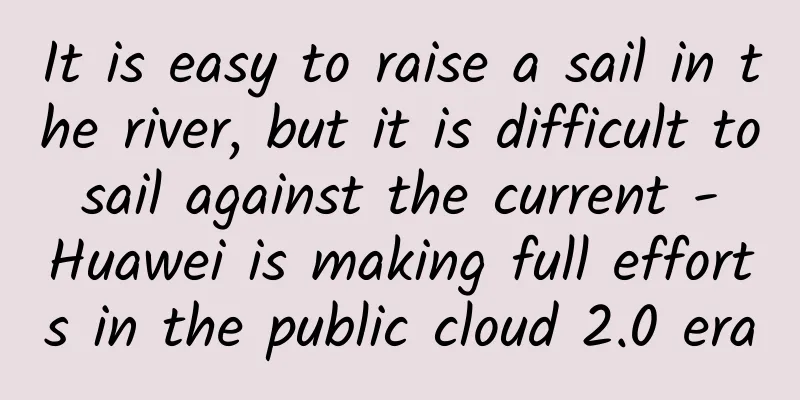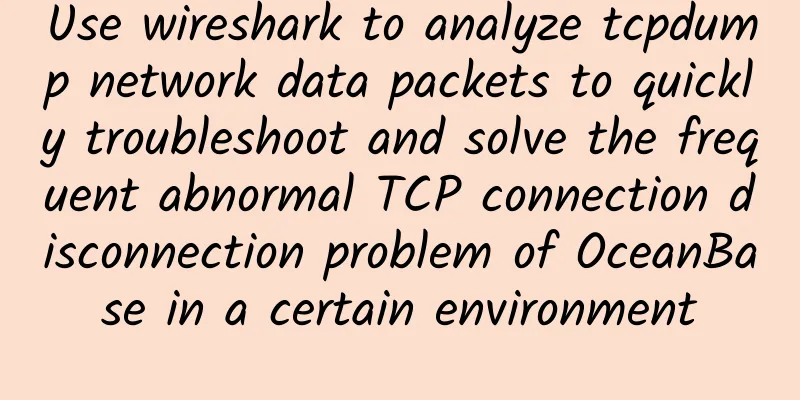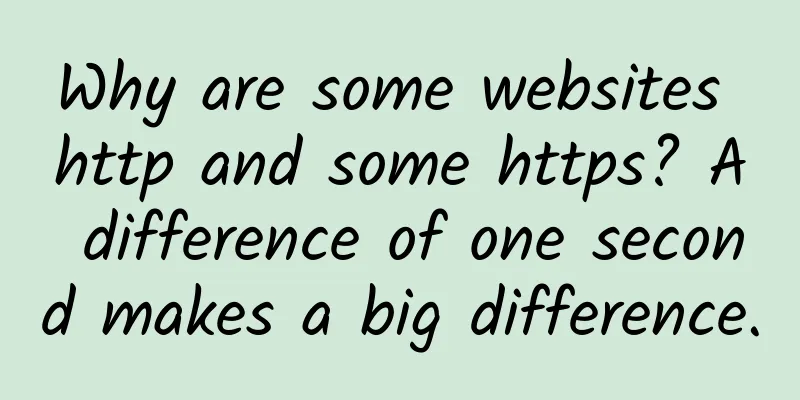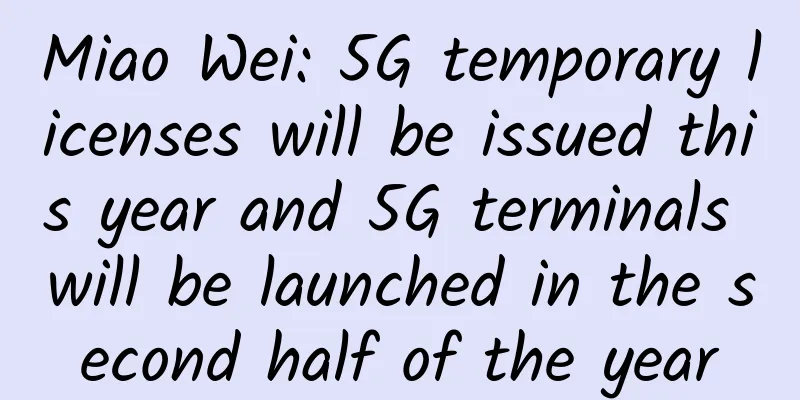It is easy to raise a sail in the river, but it is difficult to sail against the current - Huawei is making full efforts in the public cloud 2.0 era

|
[51CTO.com original article] Recently, Huawei and ChinaSoft International held a brief but grand "Partnership Signing Ceremony" in Shenzhen, announcing that the two parties will launch all-round cooperation in the fields of software development cloud, cloud solutions, cloud services, etc. After observing the scene, there are three details that surprised the 51CTO reporter... First, the senior management of both sides attached great importance to this matter. Although it was a signing ceremony that lasted less than half a day and was held only within Huawei, the lineup was luxurious! Huawei was led by rotating CEO Xu Zhijun, and nearly 10 senior management including Huawei Cloud BU President Zheng Yelai and Huawei Enterprise BG China President Cai Yinghua were all present. ChinaSoft International was led by Chairman and CEO Chen Yuhong and Senior Vice President Ma Zhen. Secondly, the name, content and connotation of the signing of the event are very significant. "Partners in the Same Boat" can be regarded as the highest-level partners of Huawei Cloud, and ChinaSoft International is the first and only partner of this level. Different from traditional channel cooperation, Huawei will provide all-round support to partners of this level in terms of technology, marketing and sales - in other words, it requires partners to bind Huawei Cloud in the public cloud field! When talking about the specific definition of partners in the same boat, Xu Zhijun said that "there is no precise definition at present" and there is no timetable, "one mature, one developed." The relevant person in charge said that Huawei plans to develop no more than 20 partners. The third is the name "同舟共吉". Xu Zhijun recalled to 51CTO reporters the process of coming up with this name in March this year: he thought of dozens of names at that time, but was not very satisfied with any of them; when this word appeared, everyone applauded and felt that this name resonated with them the most appropriately - in Xu Zhijun's words, that is, they hope that "partners and Huawei will trust each other, look to the future, and succeed despite difficulties." I have been troubled by the title countless times. Of course, I can imagine the feeling of seeing a suitable word when I was scratching my head; but another feeling also quietly came to my mind: Huawei's judgment on the future is not smooth sailing, otherwise it would not use the word "in the same boat". - In fact, at that moment, I think their own mentality is somewhat like "burning the boats".
Huawei's move to Zhongjiang is a result of the situation or a natural move? In fact, Huawei released its cloud computing strategy as early as 2010, and this year, Huawei's performance in public cloud has been quite "fierce"! March, Changsha. At the Huawei China Ecosystem Partner Conference 2017, Huawei's rotating CEO Eric Xu told tens of thousands of attendees that Huawei believes that public cloud is an unstoppable trend, "Starting from 2017, Huawei will work with its partners to look to the future and vigorously promote public cloud." Eric Xu also announced that a Cloud BU (hereinafter referred to as "Huawei Cloud BU") will be established to be responsible for public cloud, and plans to increase the number of employees by 2,000 in 2017 to invest heavily in building an open public cloud platform. Immediately afterwards, Huawei announced that Zheng Yelai, President of Huawei's IT Product Line, would concurrently serve as President of Huawei Cloud BU. Starting from late June, the "If the Future Can Be Foreseen - Huawei Cloud China Tour" series of press conferences were held in Nanjing, Beijing, Shanghai and other places, fully displaying Huawei Cloud's products, services, and ecosystem, and promoting Huawei's insights and differentiated advantages in the Cloud 2.0 era. In July, the original "Huawei Enterprise Cloud" was also fully upgraded to "Huawei Cloud". Such a massive move has clearly and undoubtedly shown Huawei's momentum, or in other words: Huawei has made a big bet on the public cloud! Why did Huawei choose this time? And why is it making such an unremitting effort? 51CTO reporter believes that there are two reasons: external and internal. First, changes in the external market force Huawei to make bets as quickly as possible. In terms of volume and growth rate, the public cloud market has become an indispensable giant pie in the future, both globally and in Asia Pacific. IDC's latest report predicts that global spending on public cloud services and infrastructure is expected to reach $128 billion in 2017, an annual growth of 25.4%; the annual compound growth rate of the public cloud market in the next five years is 21%. At the same time, data shows that IaaS spending in the Asia-Pacific region will surpass SaaS spending in the first half of 2017. Even so, according to popular sayings, the total size of all public cloud vendors has only activated about 10% of the public cloud market. This chess game is so big that it is hard not to yearn for it. However, as a latecomer in this booming market, Huawei is facing a pack of wolves at home and abroad, and there is not much time left for Huawei; if Huawei continues to slack off, I am afraid it will have to give up this market. Making up its mind at this time is not only a pressure from the external market, but also a military order from Huawei to itself, and a shot in the arm for its partners. Secondly, changes in the internal "cloud-pipe-end" strategy determine that Huawei must fully develop in the cloud market. In recent years, Huawei has always taken the "cloud-pipe-end" strategy as its core strategy. According to the reporter's understanding, in this strategic architecture, "cloud" is the cornerstone, "pipe" is the pillar, and "end" is the bracket. Without a strong cloud platform, "pipe" and "end" are out of the question; and the direction of the cloud platform naturally determines the position and direction of "pipe" and "end". But the problem is that Huawei Cloud's strategy is gradually becoming clearer and more complete! This process took Huawei quite a while. Huawei first proposed the concept of "cloud, pipe and terminal" in 2010. Interested readers can search the news at that time. Although Huawei had already proposed a clear direction for the development of enterprise business at that time, it was still difficult to get rid of the operator thinking and cooperation habits that had grown with it for more than a decade. It was not until the "2011 Huawei Cloud Computing Conference and Partner Conference" (HCC2011) in the second half of 2011 that Huawei officially announced the establishment of the IT product line. After another two or three years of running-in, Huawei clearly announced that "in the field of enterprise business, Huawei's strategy is to 'do what it can do and not do what it cannot do', focusing on the ICT infrastructure that it is good at, not jumping out of this boundary, and leaving everything else to partners." It was not until 2015 that Huawei described its ICT strategy as "making every effort to help enterprises achieve digital transformation" and defined its cloud strategy as "focusing on the IaaS layer, enabling the PaaS layer, and aggregating the SaaS layer", while publicly promising: "No applications on top, no data on the bottom". Only then did Huawei's cloud strategy become basically clear. In that year, AWS, which had been engaged in cloud computing for 10 years, shocked Wall Street with a Q3 revenue of more than US$2 billion, a five-fold increase year-on-year. Microsoft Azure had already landed in China through 21Vianet; Alibaba Cloud had been established for 6 years and had become a representative company of domestic public cloud... In the view of 51CTO reporters, Huawei really clarified its all-round ICT strategy at the Huawei Connect Conference in 2016. At that time, Huawei's rotating CEO Hu Houkun delivered a speech saying: "The next 10 years will be the era of cloud 2.0, various industry clouds will rise, and enterprises will be the protagonists of cloudization." Xu Zhijun directly took "embracing the cloud, integrating into the cloud, and becoming a digital enterprise" as the theme of his speech, saying that Huawei's mission is to help enterprises "realize the full connection between people, things and things in the enterprise." In this strategy, without a self-owned and powerful cloud platform, it is basically a futile effort! Huawei has closely linked the success or failure of its overall strategy with the success or failure of its cloud platform!
For Huawei, which has always planned before taking action, it is not surprising that it has spoken out strongly in the past three or four months once it has made up its mind. With so many ships competing, how does Huawei Cloud set sail? It is not an exaggeration to describe the current public cloud market as a "thousand ships racing against each other". It is not easy for Huawei to "swim in the middle of the stream and stop the waves". It should be said that although Huawei Cloud did not start early, it has accumulated a lot of experience and its growth is amazing. Zheng Yelai, President of Huawei Cloud BU, told 51CTO reporters that the organizational system of Huawei Cloud BU has been adjusted, and their responsibility is to concentrate their strength and focus on this one thing. In just a few months, Huawei Cloud has completed global integration. Whether it is Huawei Cloud and Tianyi Cloud in China, or multiple cloud platforms in cooperation with Deutsche Telekom, France Telecom, and Telefonica, they are all part of Huawei Cloud. In addition, the number of users has nearly doubled in the past four months, and more than 20 cloud services have been added to the product, with a total of 65 in 10 categories. In addition, focusing on enterprises and government groups, Huawei Cloud has also developed a number of differentiated services, such as HPC (High Performance Computing Cloud) and bare metal services. But even so, the public cloud market is a long race after all. The road ahead is long. What is the future of Huawei Cloud? Can it win this battle that determines the success or failure of the entire Huawei? In the view of 51CTO reporters, three factors will determine the future trend of Huawei Cloud.
The first is the cooperation situation, that is, whether an open ecosystem can be truly established. Building an open ICT ecosystem is Huawei's overall strategy. At the 2016 All-Connect Conference, Huawei's rotating CEO Guo Ping said that in the cloud era, ICT has changed from a vertical industry to an enabling tool for digital transformation. Vertical integration in the industrial chain has become a thing of the past. The ICT industry must build a new ecosystem: openness, diversity, exogenousness, resource integration, and symbiosis and win-win. Guo Ping clearly stated: "In the huge pie of digital transformation, Huawei only takes 1%, and the rest belongs to partners." These words are very inspiring, but not easy to do. Whether partners recognize it? Whether the integration and docking between each other are smooth, all directly affect the implementation of Huawei's cloud strategy. This time, Huawei proposed to develop "partners in the same boat" based on the Cloud Ecosystem Partner Program 1.0. We can actually feel Huawei's desire to strengthen the establishment of an ecosystem.
The second is technology, which is the progress of technology solutions for enterprise digital transformation. After decades of development, enterprises have accumulated enough IT systems, and the demand for migration to the cloud is huge, but all of these require comprehensive solutions that are feasible for enterprises. Huawei, which has been focusing on operators for more than a decade, is actually in the process of continuous exploration of the application of the government and enterprise market; although it has a strong technical reserve and talent accumulation, the current situation is to learn and understand while advancing rapidly. In a sense, this is a research and development battle entangled with technology and application. Creating solutions suitable for Chinese enterprises determines whether Huawei can gain a foothold and even win in this market. From the current perspective, Huawei focuses on promoting the concept of "Cloud 2.0", featuring trustworthy, open, and offline service capabilities, and has launched solutions for manufacturing and software development, which have achieved very good market response. But the question is whether this strategy and speed can be sustained and stable, which requires Huawei's understanding of the industry and its technology research and development capabilities. Third, the key is whether Huawei's sense of crisis can be transformed into action. Throughout the history of IT, a company is rarely defeated by competitors directly. It mainly depends on whether the company can foresee risks and take the initiative to adjust in the process of development. Huawei's sense of crisis, if it says it is the second, no one dares to claim to be the first; but now Huawei, with 170,000 employees, is no longer young, it is already a giant company, "a big ship is difficult to turn around". We can feel the sense of crisis of Huawei's leadership, but can this worry and pressure reach the bottom and truly be transformed into action for the whole company? “When you reach the end of the water, sit and watch the clouds rise.” Let us wait and see how Huawei Cloud will develop. [51CTO original article, please indicate the original author and source as 51CTO.com when reprinting on partner sites] |
<<: Building a native cloud to truly realize the benefits of NFV
>>: The diversity of application scenarios lays the foundation for the future of blockchain
Recommend
How to ensure consistency of Serverless business deployment updates?
Since I started working on Serverless tools, I of...
5G is so good, but how many people can afford the data charges?
In the past 2019, with the issuance of 5G commerc...
Check out the five important characteristics of SD-WAN in 2019
SD-WAN has reached a new inflection point in 2019...
Are 5G base stations harmful to the human body?
By the end of 2020, my country has built a total ...
What kind of network slicing does 5G require?
Everyone should be familiar with network slicing....
Huawei Software Development Cloud helps improve WeChat mini-program code quality
In the early morning of January 9, after more tha...
Sharktech: Shark data center 1Gbps unlimited traffic server Denver from $49/month, Los Angeles from $59/month
Sharktech, also known as SK Data Center, is a lon...
What should we pay attention to during the wiring construction of weak current systems?
Wiring construction of horizontal subsystem The h...
What is the difficulty in porting your number?
Number portability was once considered an importa...
What is 5G IoT?
What is non-cellular 5G? I imagine most readers a...
Three-minute review! A quick overview of 5G industry development trends in July 2021
After the rapid development in 2020, 2021 is a cr...
Allocating 5G private network spectrum is conducive to promoting market competition
Recently, the delayed 5G spectrum auction in Indi...
Wi-Fi Alliance announces Wi-Fi 6 as new logo
Nowadays, Wi-Fi has become an indispensable part ...
my country has entered the ranks of innovative countries, with remarkable achievements in 5G, artificial intelligence, and autonomous driving
The world trend is surging forward. If we stop th...
Transitioning from IPv4 to IPv6, you can't miss these knowledge points
Preface Network is one of the basic skills for en...









